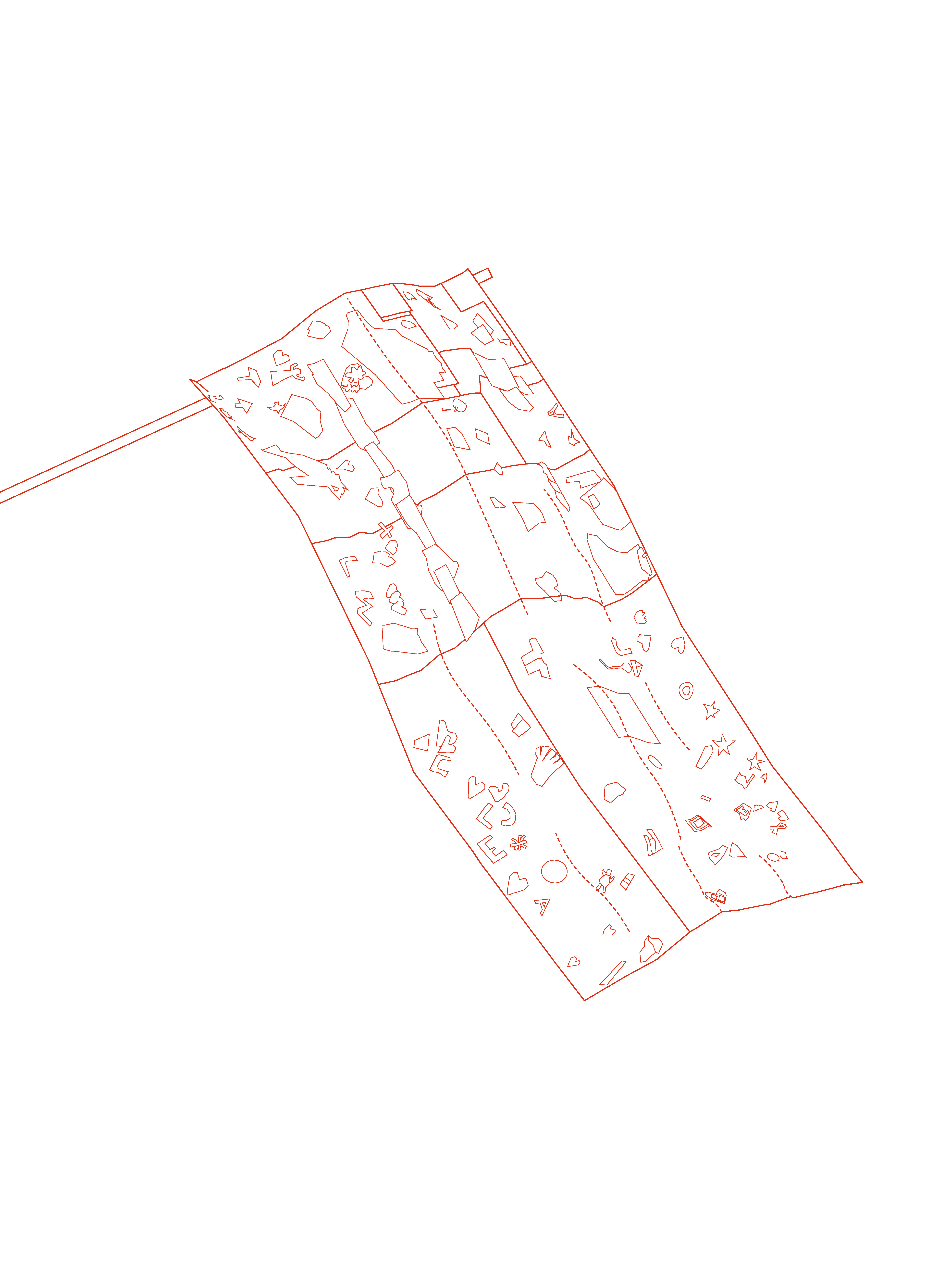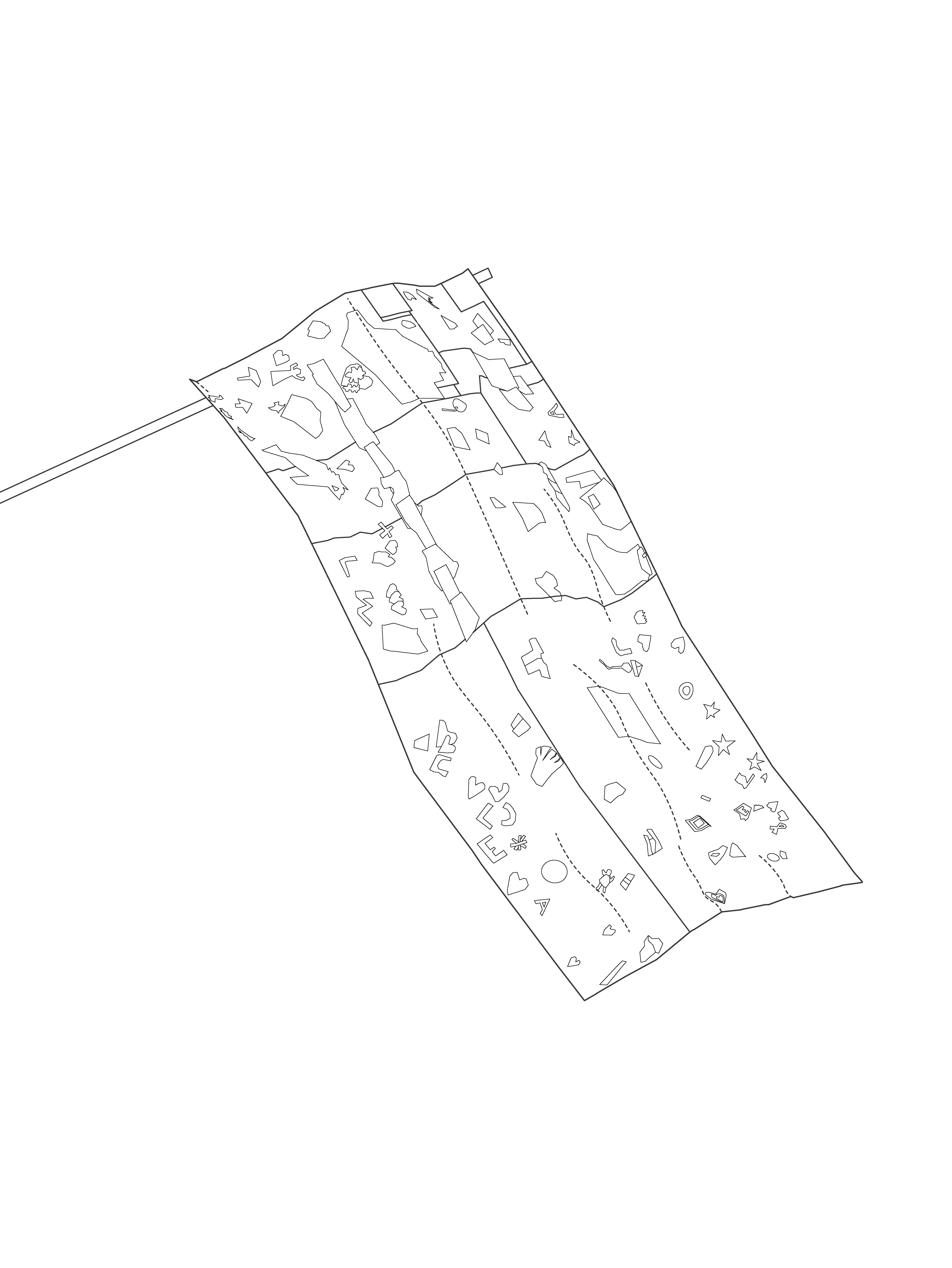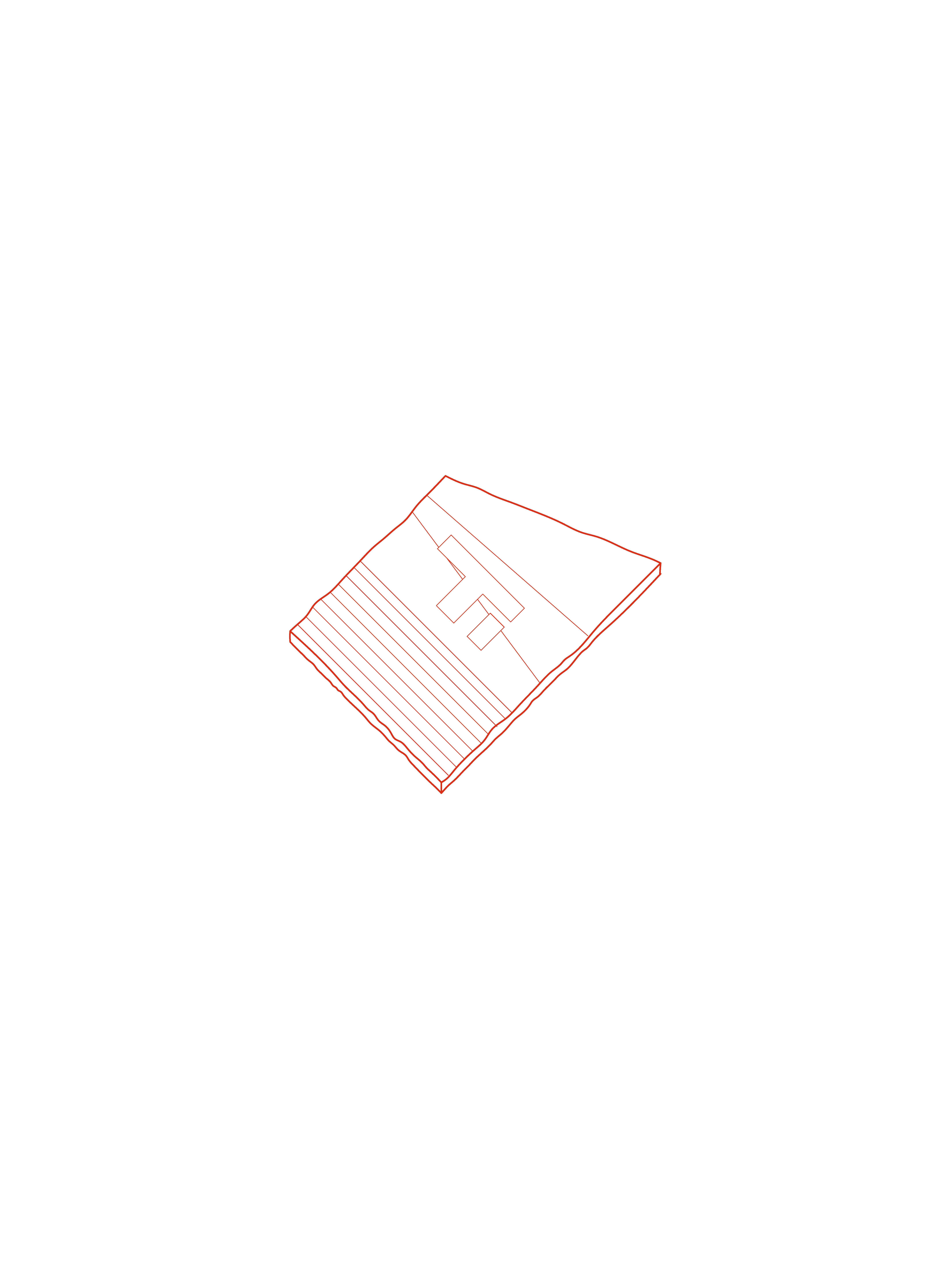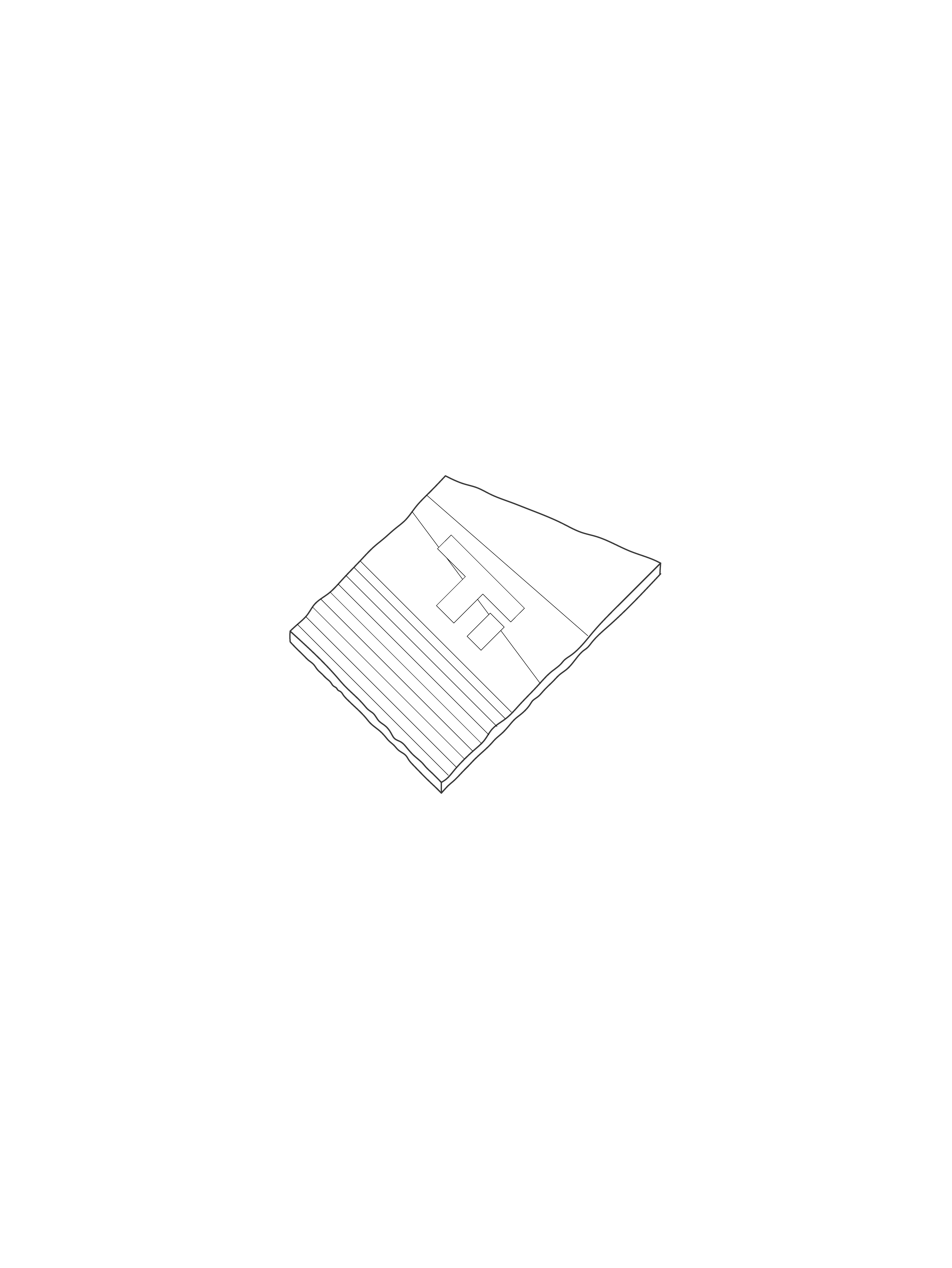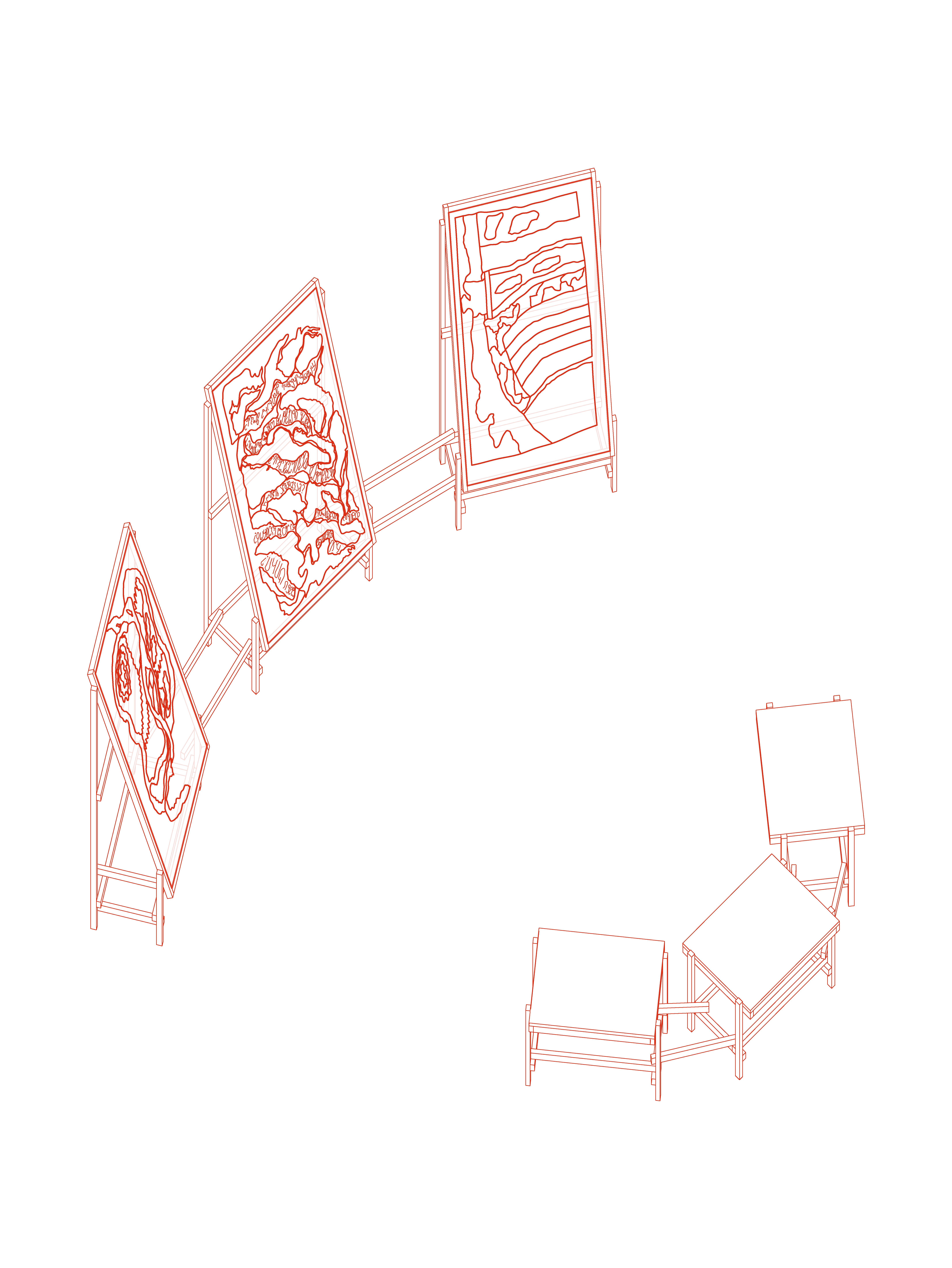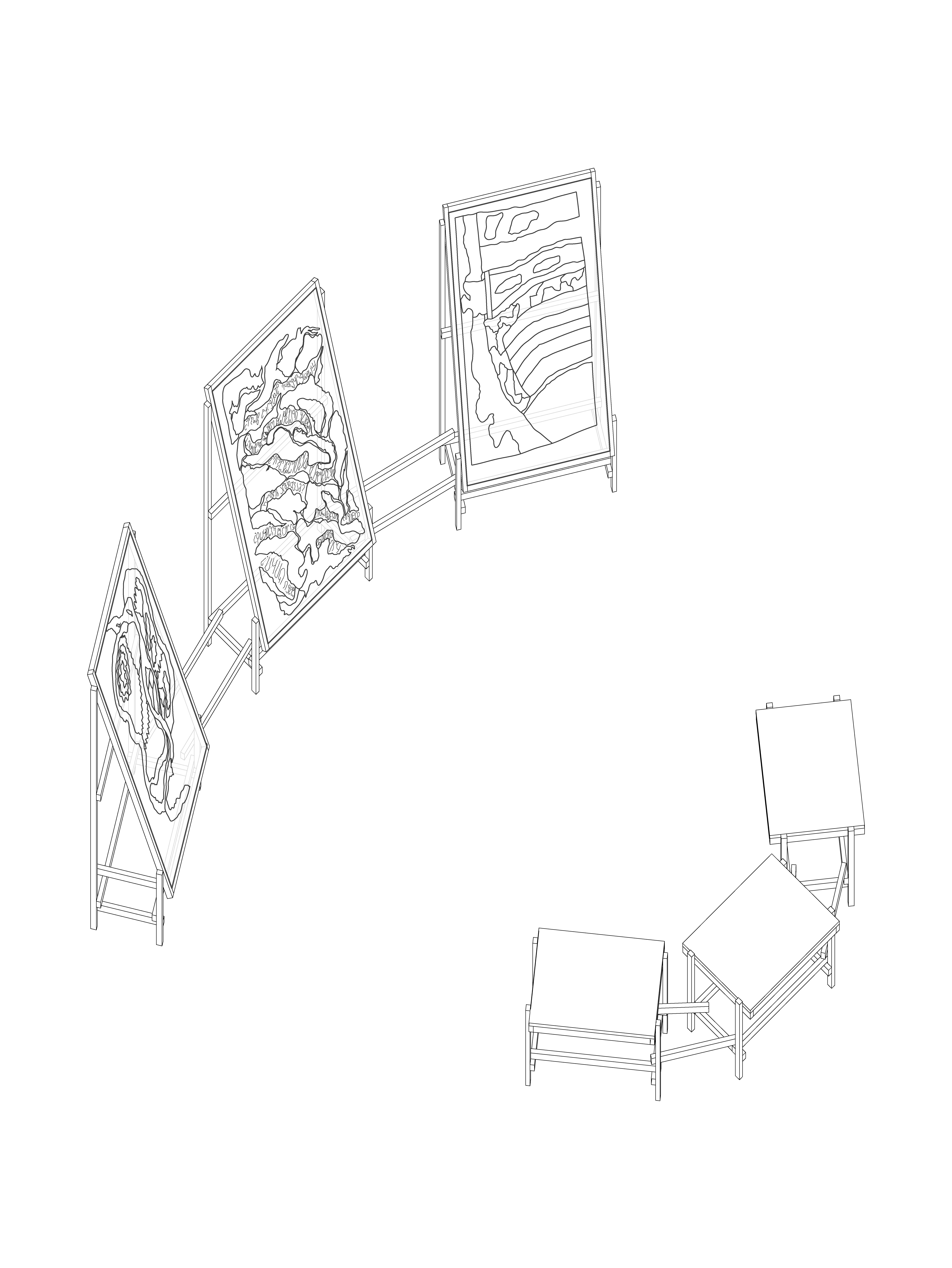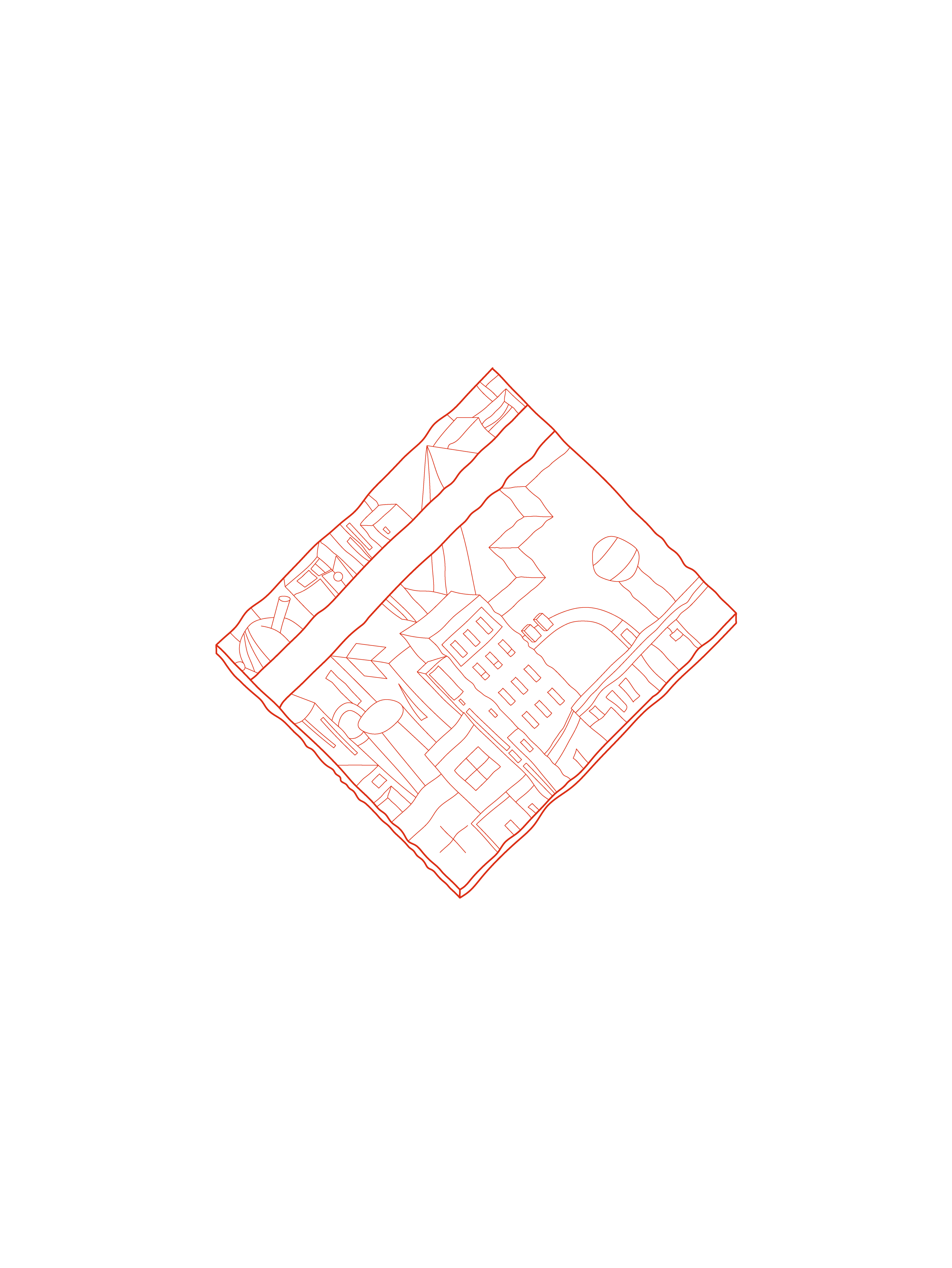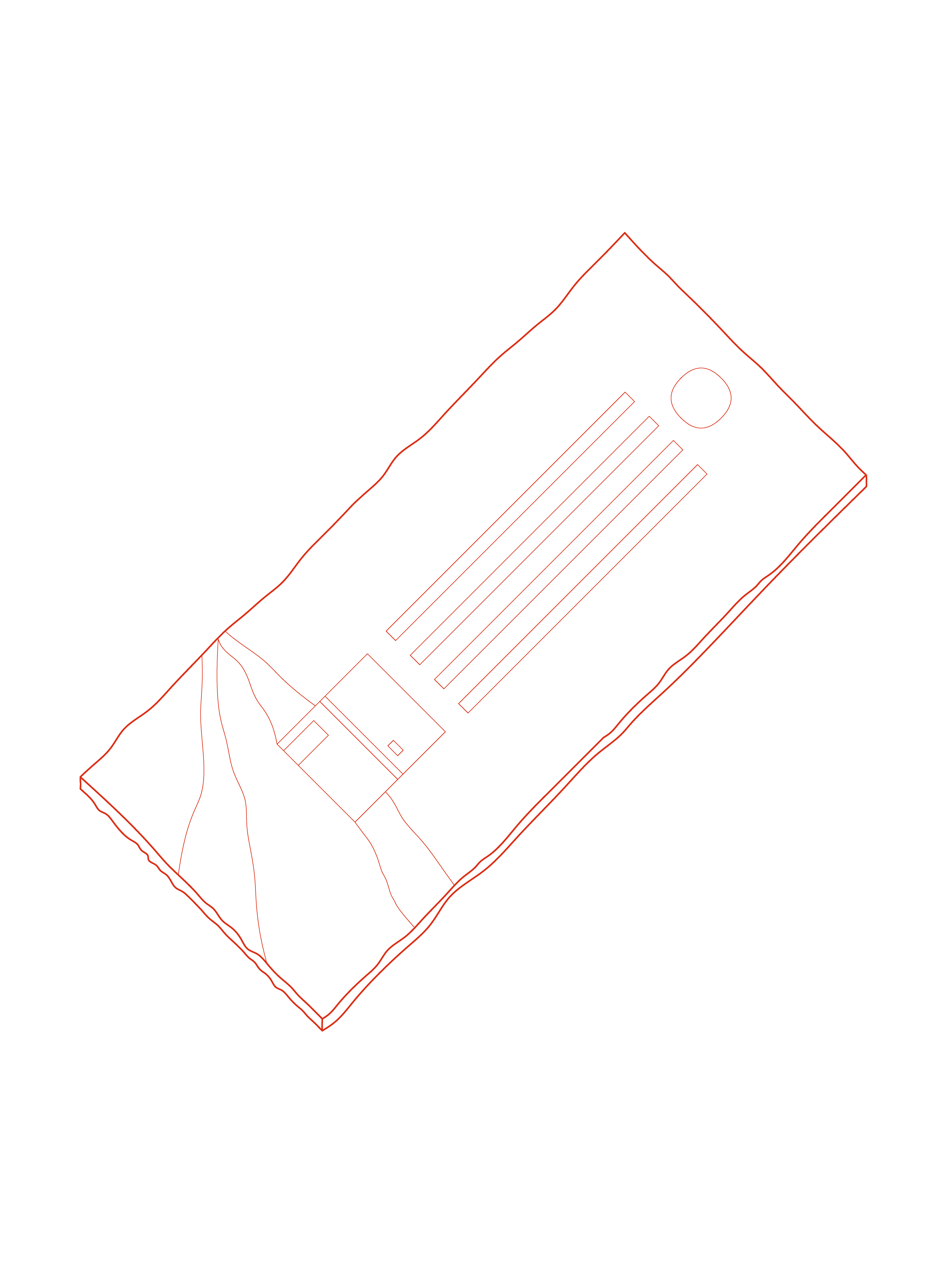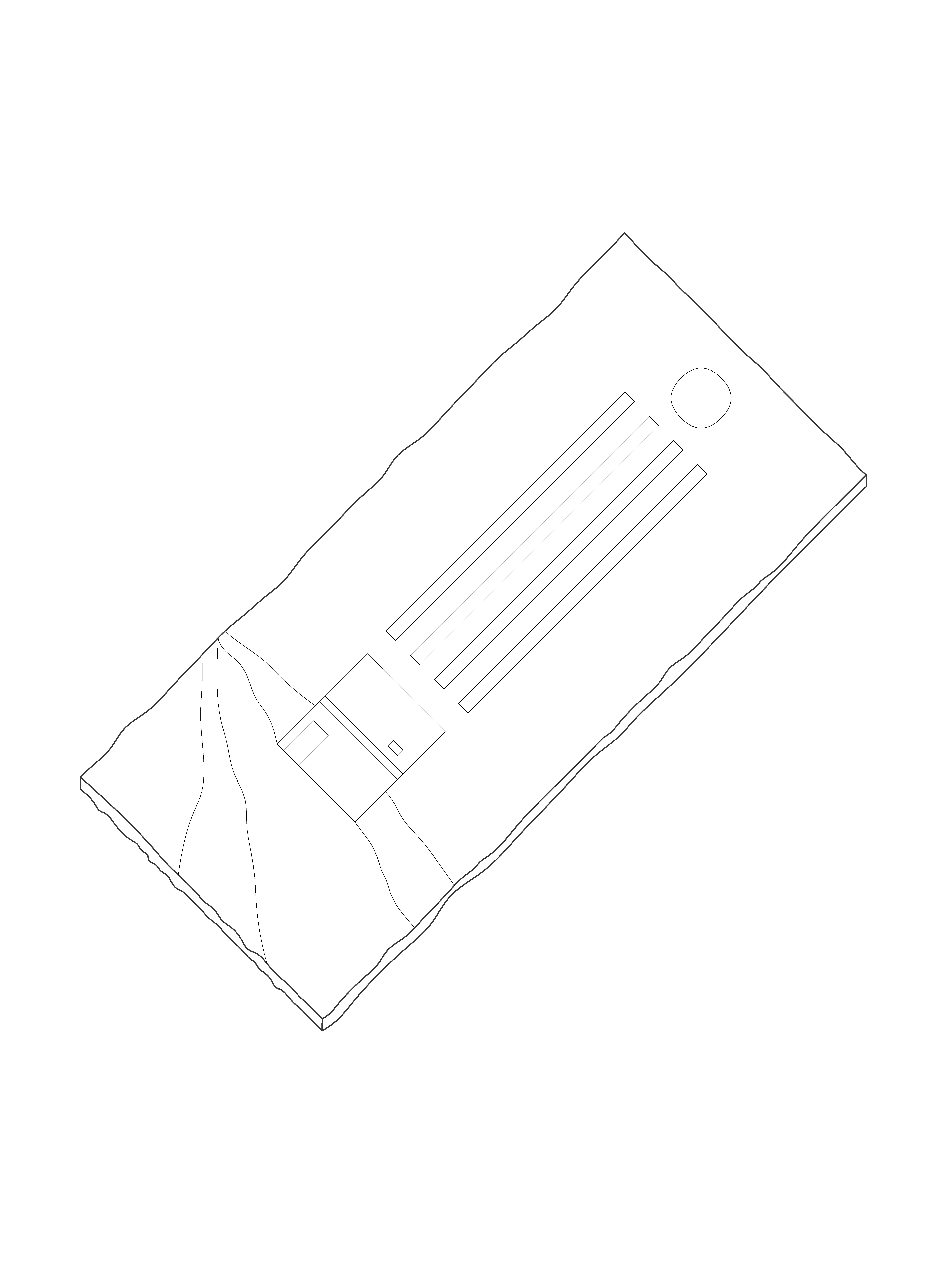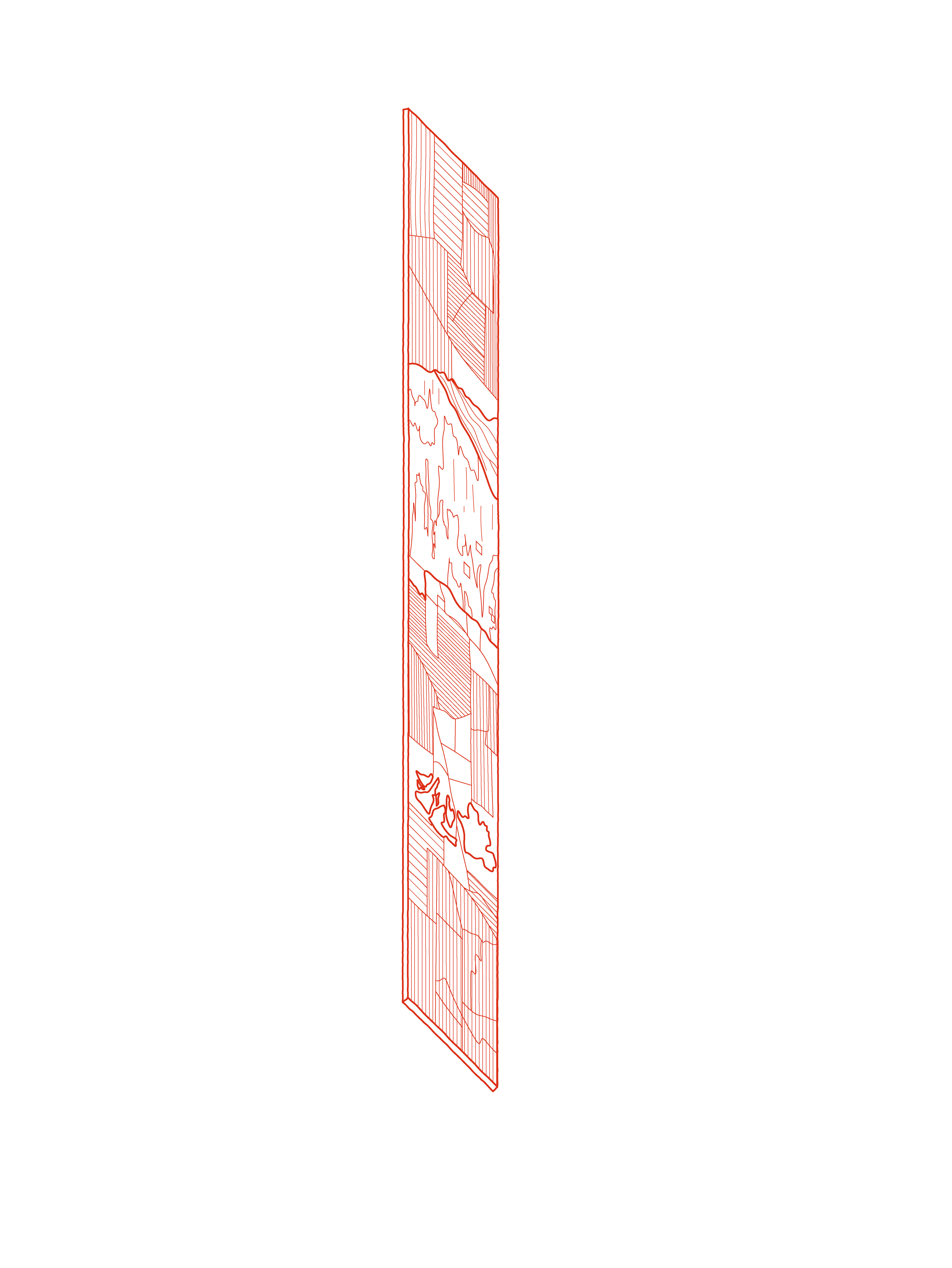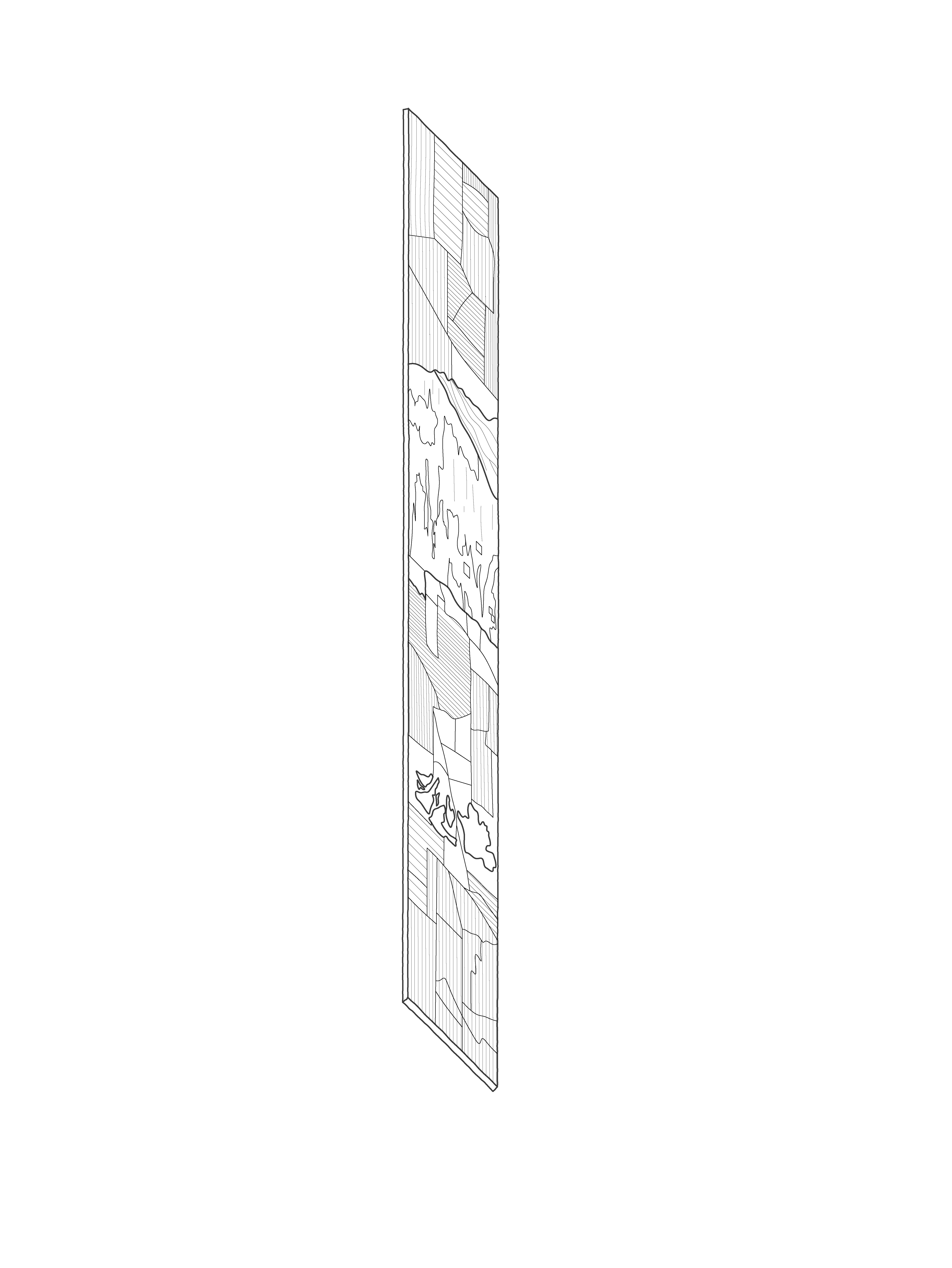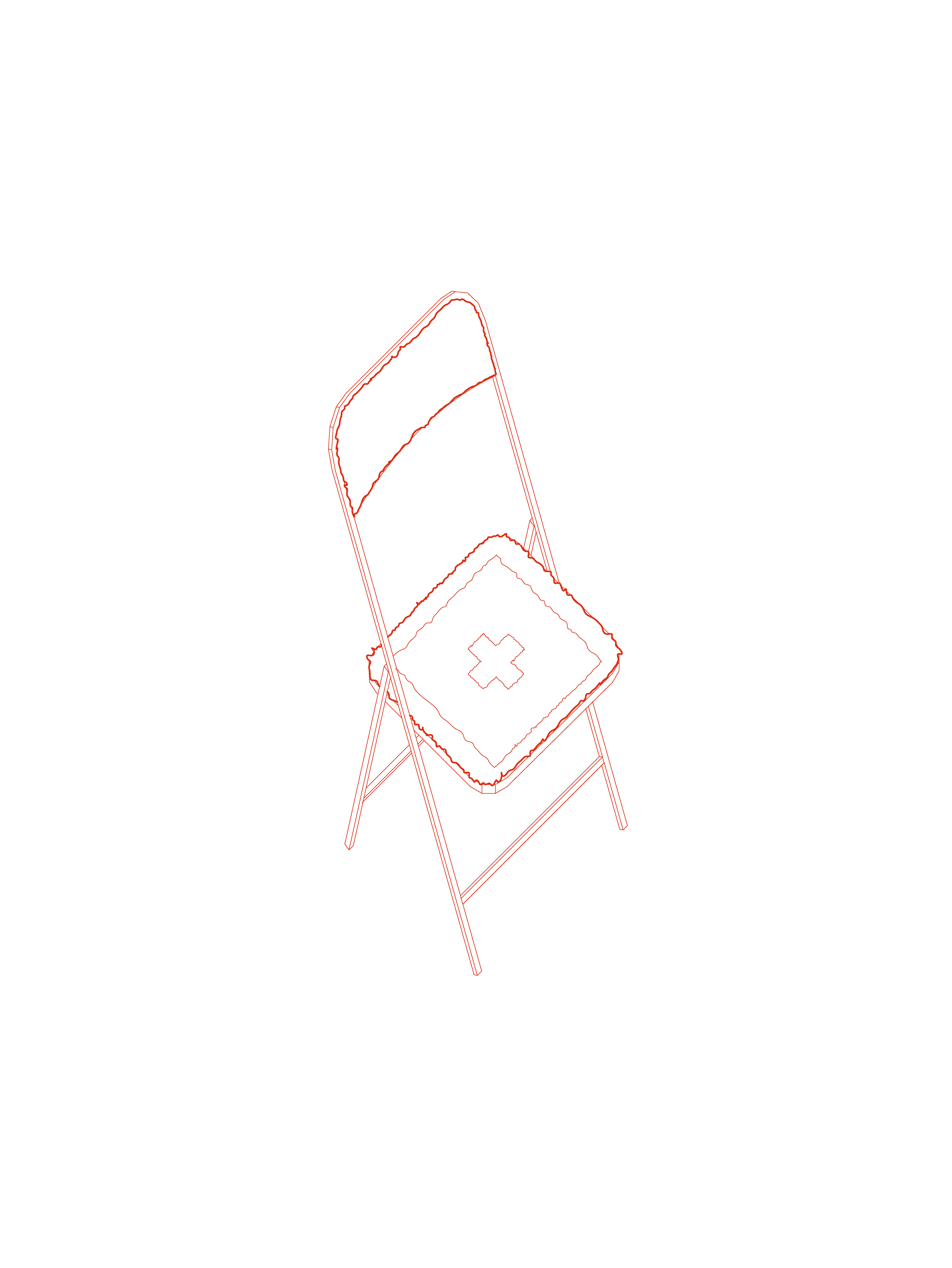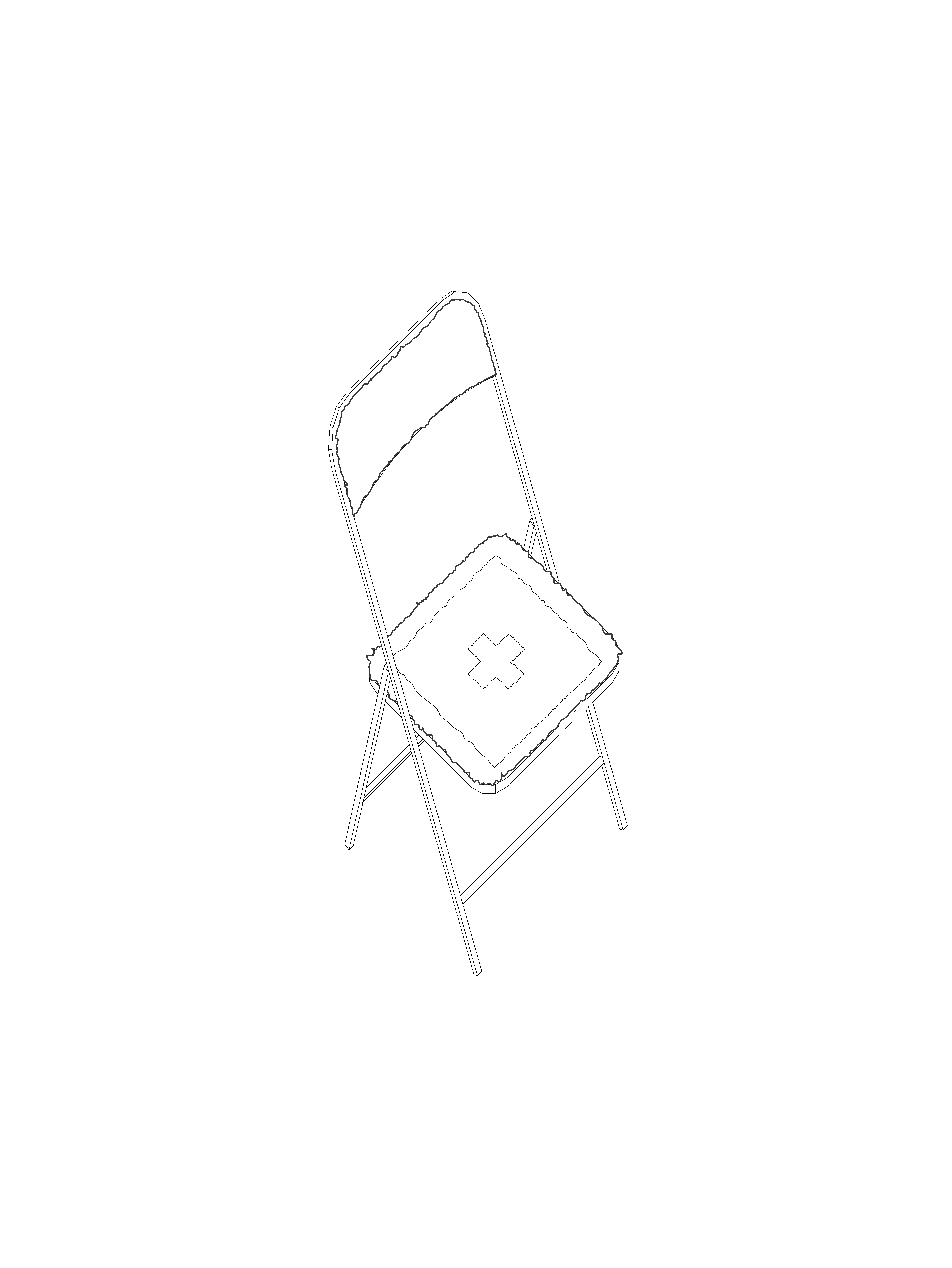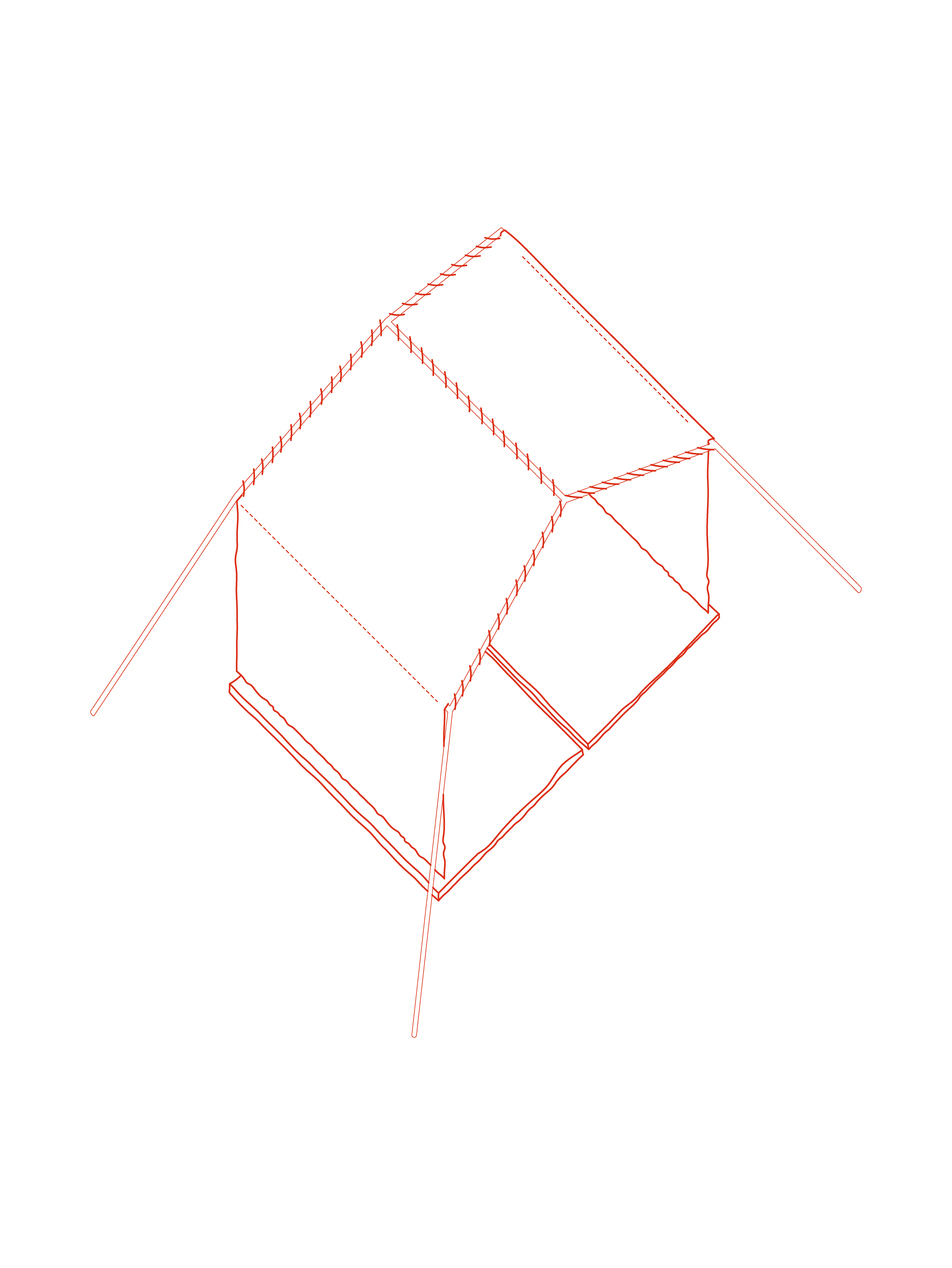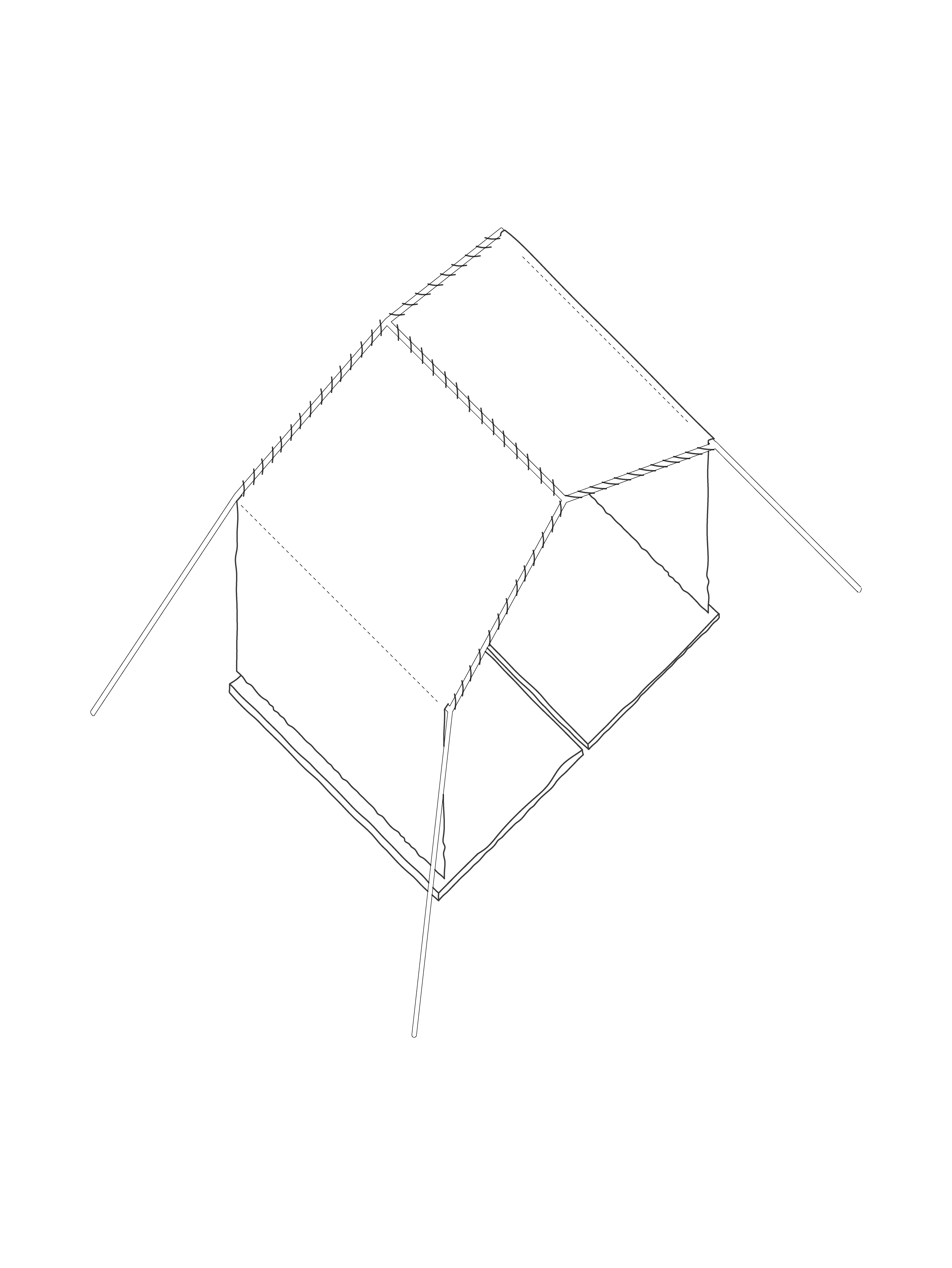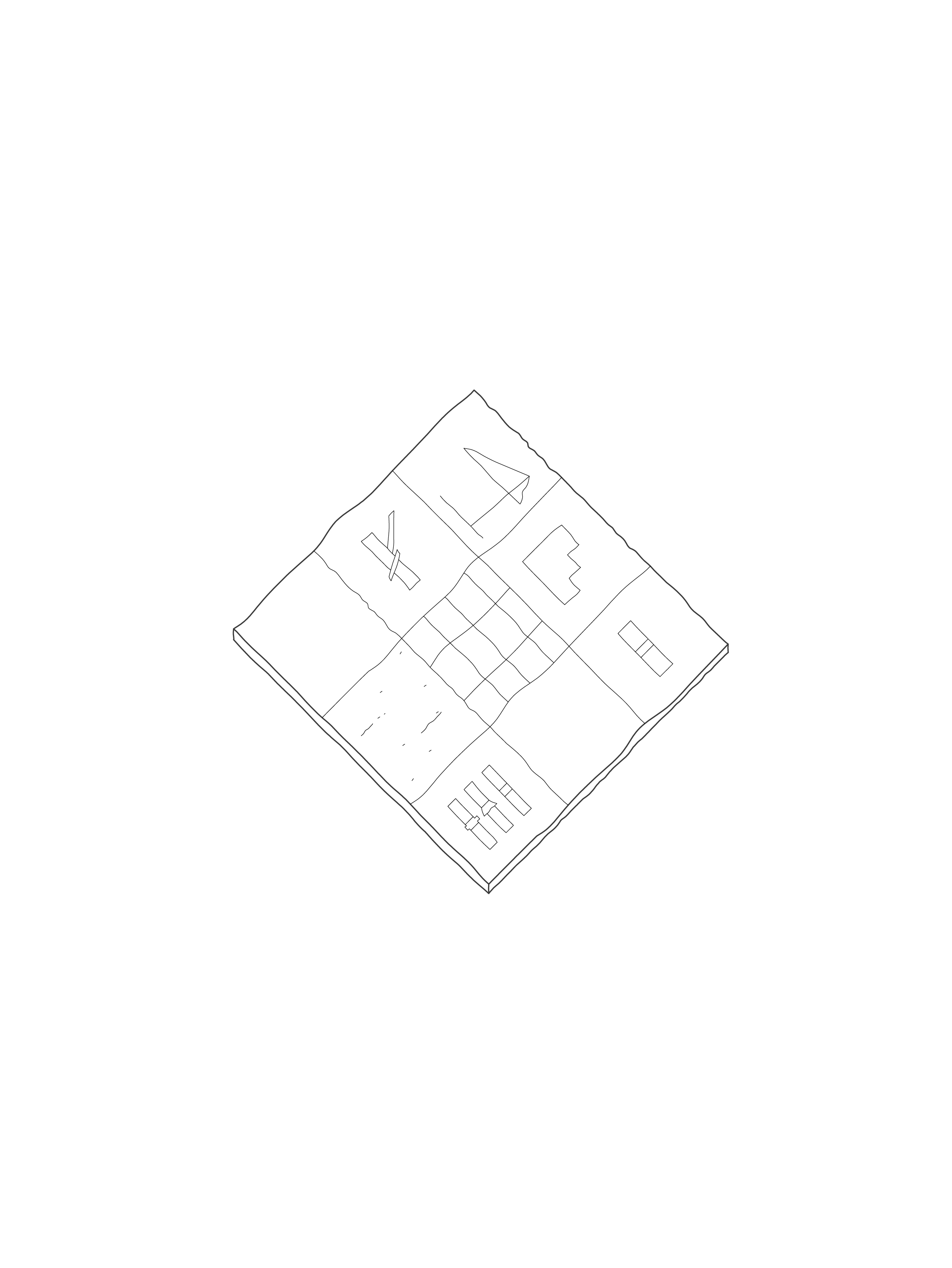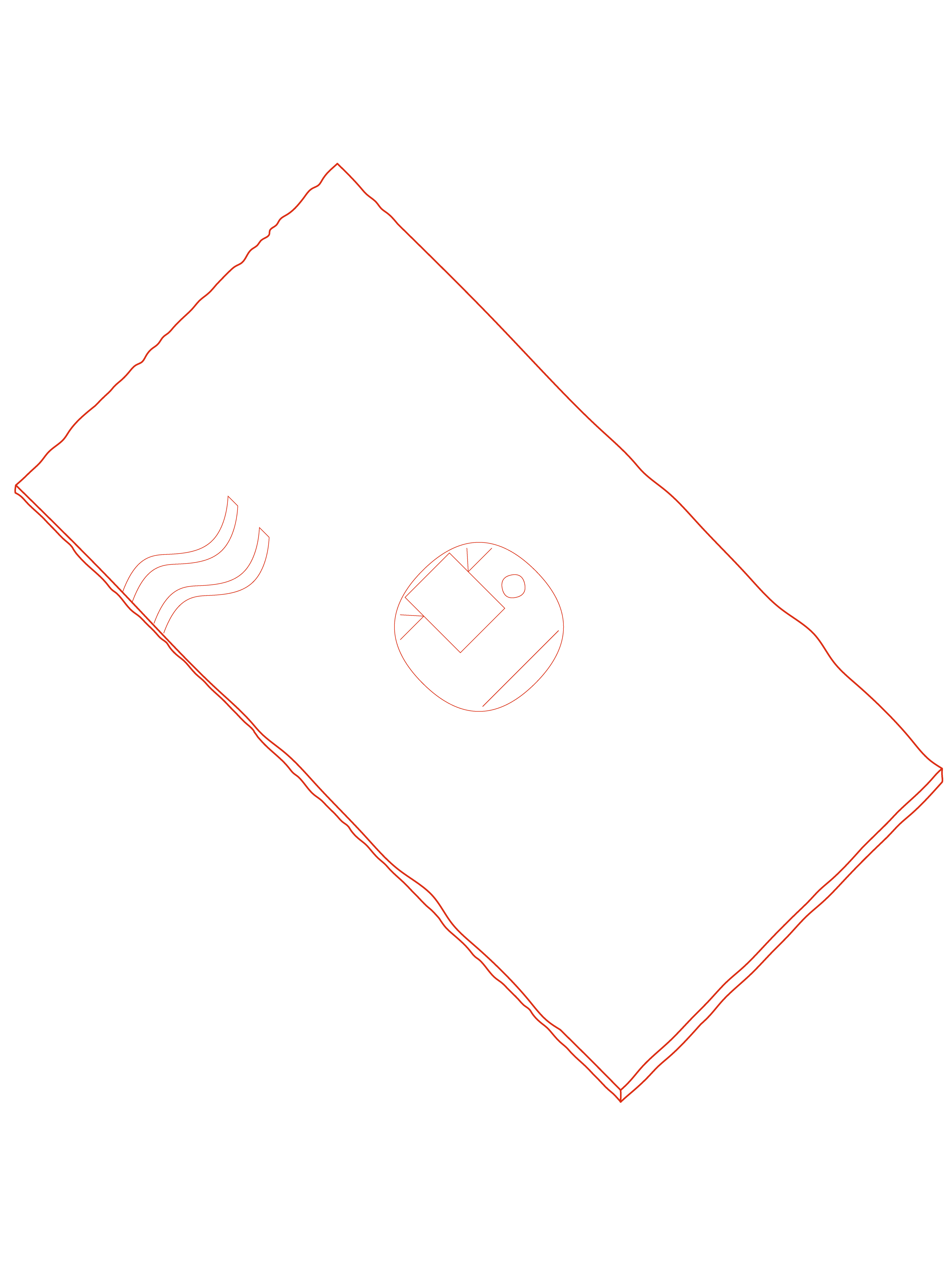



fr.
Le tapis s’inspire des trois architectures du jardin, celles-ci destinées à moduler les végétaux plantés autour d’elles. Il se décompose alors en 3 parties, chacune représentant un élément architectural et un objet qui lui est associé : au toit le tapis, au mur la lampe et au sol la céramique.
Le tapis est destiné à vivre avec le jardin, et à s’y décomposer. Chaque couleur de laine a une composition associée, allant de laines naturelles à des laines entièrement synthétiques. Ceci doit permettre aux différentes parties du tapis de se comporter singulièrement par rapport aux végétaux, mousses, intempéries et autres types d’usures. Il est tissé sur une toile de jute. Les brins sont fixés avec une couche simple de colle qui participe à la transformation progressive du tapis.
x Gaetano, Florentin, Guilhem
eng.
The carpet is inspired by the garden's three architectures, which are designed to modulate the plants planted around them. It is divided into 3 parts, each representing an architectural element and an associated object: the carpet on the roof, the lamp on the wall and the ceramic on the floor.
The carpet is intended to live with the garden, and to decompose within it. Each wool colour has an associated composition, ranging from natural wools to fully synthetic wools. This is to enable the different parts of the carpet to behave in a unique way in relation to plants, moss, weather and other types of wear and tear. It is woven on a jute canvas. The strands are fixed with a simple layer of glue, which contributes to the carpet's gradual transformation.
x Gaetano, Florentin, Guilhem
